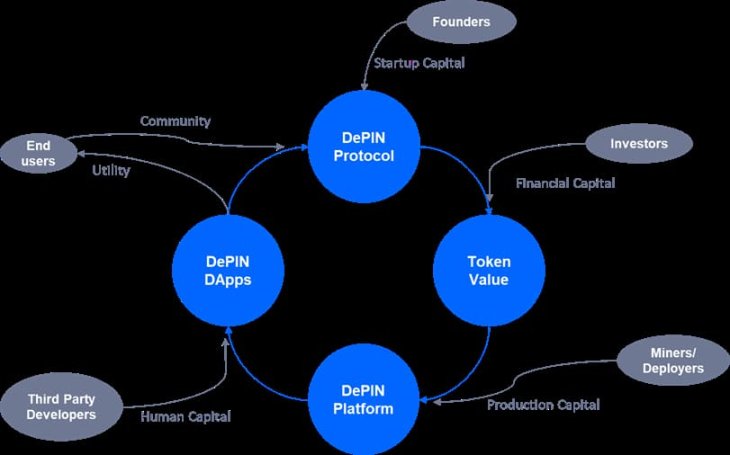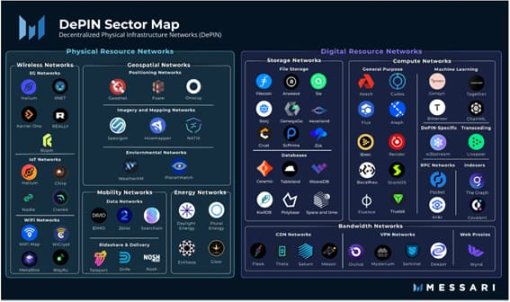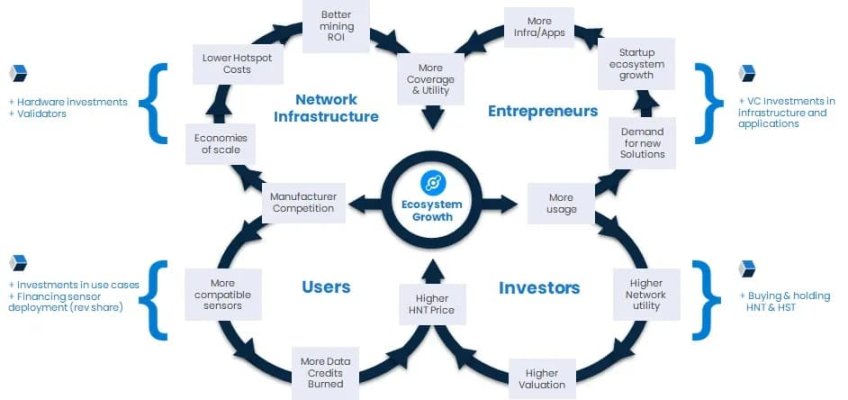Written by: Telefonica
Compiled by: angelilu, Foresight News
Telecommunications operators have always been dominant in the field of mobile communication and the internet as providers of infrastructure for the previous generation of the internet. However, with the emergence of new Web3 technologies, telecommunications operators have also begun to show strong interest in them.
According to the ranking of global mobile network operators based on customer numbers on Wikipedia, the top 7 are China Mobile (Mainland China), China Unicom (Mainland China), Singtel (Singapore), Reliance Jio (India), AT&T (United States), China Telecom (Mainland China), and Telefonica (Spain). These major telecommunications giants have all made their presence felt in the Web3 field:
- China Mobile jointly initiated the establishment of the Hong Kong Web 3.0 Association in April this year;
- China Unicom released its metaverse strategy at the end of last year and established the Metaverse Innovation Industry Alliance;
- Singtel entered the metaverse platform under the South Korean telecommunications giant SK Telecom in January this year;
- Reliance Jio (India) announced its entry into the blockchain and central bank digital currency (CBDC) field in August this year;
- AT&T (United States) has been involved in blockchain since 2016 and has applied for a blockchain server patent;
- China Telecom launched the Web3.0 blockchain SIM card in May this year;
- …
The list goes on. Recently, Telefonica, the Spanish telecommunications company, also disclosed its investments and layout in the Web3 field and its focus on the development direction of Web3 in its official blog. It is evident that Telefonica attaches great importance to blockchain technology, and insights into the focus of telecommunications operators in this field can be gleaned from the article.
Telefonica, S.A. is the world's seventh largest fixed-line and mobile communication operator, mainly providing fixed-line and mobile communication services in Europe and Latin America, including voice communication, value-added services, mobile data and networks, roaming, fixed wireless services, relay, and paging services.
The following is the complete translation:
Telefonica's involvement in "Web3" began with the creation of the "Metaverse" business unit, but in terms of Telefonica Ventures, we have already made some strategic investments: Bit2me, Nova Labs (Helium), Borderless, supporting the roadmap of the TEF Metaverse business unit.
This article focuses on the use of blockchain to achieve decentralization through tokenization of resources, namely the decentralized physical infrastructure network - DePIN.
Decentralized Physical Infrastructure Network – DePIN
DePIN is defined as a network that uses tokens to incentivize people to crowdsource and build a real-world physical infrastructure network.
To better understand, we will continue to elaborate: the network (decentralized blockchain network) uses tokens (digital tokens and/or cryptocurrencies) to incentivize people to crowdsource and build (form communities, fund, and establish) real-world physical infrastructure networks (composed of real, connected machines, devices, vehicles, or machinery that provide goods and services to people and machines in the real world).
This trend may also be referred to by other names such as EdgeFi, Proof of Physical Work (PoPW), or Token Incentivized Physical Networks (TIPIN). But it seems that the industry has now reached a consensus on DePIN.
This seemingly inconspicuous term has the potential to unify the most promising areas of Web3 - the internet and the Internet of Things economy. Being part of a decentralized physical infrastructure network means receiving token rewards, which can be used to purchase tangible things (such as power networks, telecommunications services, network access, etc.) or to manage the tangible benefits of these networks. It is different from some other things in Web3 in that it links utility and governance to real-world products or services.
In other words, DePIN uses blockchain and tokens to create and incentivize the deployment and use of value-generating physical infrastructure. DePIN relies on decentralized networks and communities, rather than centralized backends and companies, for transactions and business logic.
Positive Feedback of DePIN
Due to the use of tokens, DePIN projects can benefit from positive feedback effects, where increased usage (demand) will raise the token price, providing additional incentives for contributors to continue building the network, as the dollar value of the tokens they are paid increases.
As the network grows, investors become increasingly interested and begin to fund the project. If the project is open source or provides contributor/user data to the public, developers can build dApps based on this data, creating additional value within the ecosystem to attract more users and contributors. The following figure illustrates how this positive feedback works in the market.

Source:Telefonica
The positive feedback of the DePIN economy effectively resolves the dilemma of which comes first, the chicken or the egg. Through token incentives, DePIN motivates participants to build and expand the supply side until end users find it attractive. This enables DePIN to establish the initial momentum needed to adopt and compete with Web2 companies.
Comparison of DePIN with the Current Situation
Here are some reasons why DePIN will change the current situation:
- By crowdsourcing the implementation of physical infrastructure, DePIN can achieve super-scale faster than traditional projects, as they are distributed among network participants and offset between future growth and revenue.
- Communities can own the hardware that makes up the network, the hardware they need, and the hardware/services they use. This aligns the interests of stakeholders with the direction of promoting adoption and growth.
- While traditional infrastructure projects are typically ultimately determined and executed by a centralized entity, DePIN is open, democratic, and accessible.
- In addition to being permissionless and open, DePIN is also resistant to censorship, with no centralized gatekeeper able to deny access for any reason.
Despite the advantages mentioned above, innovation must always be based on clear business advantages to make it sustainable in the long term. In terms of business advantages, DePIN also has a competitive advantage over traditional models:
- By crowdsourcing hardware and its maintenance, DePIN's operating capital and operating costs are only a small fraction of traditional companies, incentivizing network members to handle this issue themselves, with everyone benefiting from it.
- By leveraging blockchain, DePIN provides its members with secure peer-to-peer payments, without relying on payment processing intermediaries.
- As a native Web3, DePIN also provides network participants with direct access to various Web3 tools and DeFi services, unlocking additional sources of income for them, such as financing for new hardware.
- By reducing the upfront capital requirements, DePIN lowers the barriers to entry into various stagnant industries, thus incentivizing innovation across the entire field.
Physical Resource Networks and Digital Resource Networks
DePIN is divided into two types, depending on the products and services the network provides:
- Physical Resource Networks (PRNs) incentivize people to directly or deploy location-specific hardware to provide irreplaceable goods and services in the real world (such as geographic, mobility, energy, or connectivity).
- Digital Resource Networks (DRNs) incentivize people to directly or deploy hardware to provide replaceable digital resources (such as storage, bandwidth, or computing).
DePIN Ecosystem
With all of these competitive advantages and their community spirit, they will be able to make breakthroughs and disrupt traditional companies in various industries.
The following figure is a DePIN ecosystem diagram created by Messari:

Source: Messari.ioNavigating DePIN Domain
Telecom DePIN
Let's take a look at internet access in developing countries: infrastructure needed to connect small and remote communities often involves high upfront costs, which are mostly not suitable for profitable companies. DePIN enables communities to solve the problem themselves, bear the upfront costs, and labor themselves.
Internet access is particularly interesting because it is a replicable good. The more people have access to the internet, the more DePIN projects related to telecommunications, energy, IoT, etc., can be carried out.
Clearly, Telefonica is influenced by four sub-industries that have already deployed some networks and are operational, so we are tracking their progress internally and including Nova Labs in the Telefonica Ventures portfolio, which is a core company of the Helium network.

Source: Borderless, Helium Ecosystem
Telefonica Ventures is one of Telefonica's corporate venture capital tools for strategic investments. Our goal is to address significant challenges facing the telecommunications industry and create new businesses and verticals aligned with Telefonica's core strategy using cutting-edge technology, and there is no doubt that DePIN absolutely fits our investment philosophy.
免责声明:本文章仅代表作者个人观点,不代表本平台的立场和观点。本文章仅供信息分享,不构成对任何人的任何投资建议。用户与作者之间的任何争议,与本平台无关。如网页中刊载的文章或图片涉及侵权,请提供相关的权利证明和身份证明发送邮件到support@aicoin.com,本平台相关工作人员将会进行核查。




